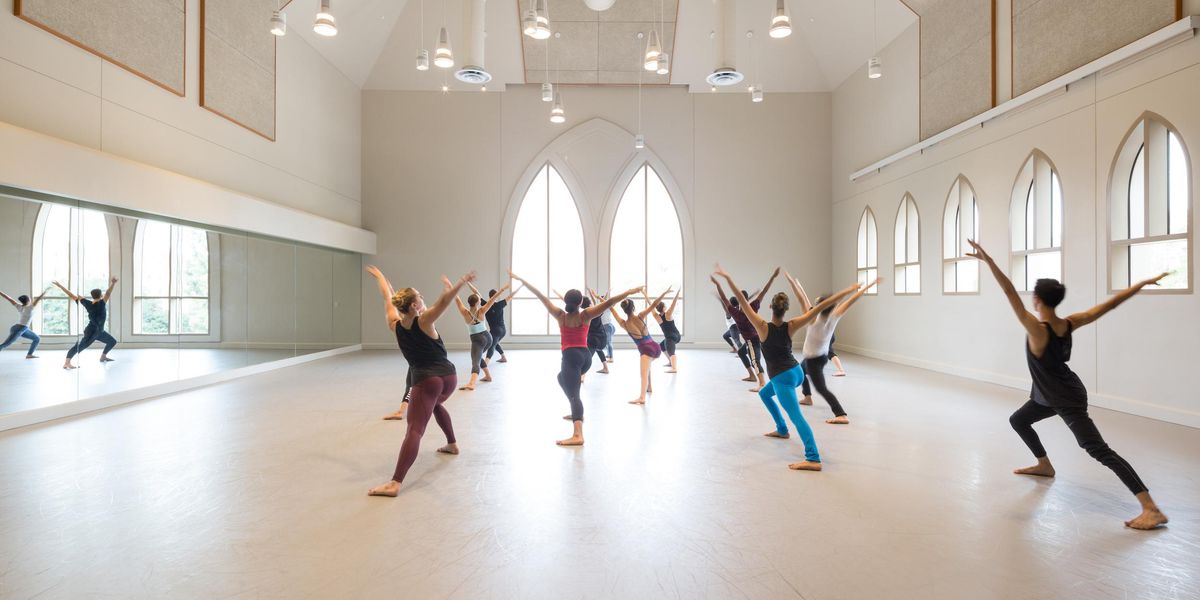A Place to Play
Broadway Dance Lab gives choreographers freedom to experiment.
Dancers perform at a Broadway Dance Lab fundraising gala. PC Daniel Robinson, Courtesy BDL
He calls it the Broadway Dance Lab, but Josh Prince doesn’t think parochially. The not-for-profit “dance incubator” he founded in the fall of 2012 has welcomed choreographers from the ballet world (American Ballet Theatre star Marcelo Gomes) and from contemporary concert dance (Bessie winner Larry Keigwin) as well as, of course, the working theater folk you might expect, like two-time Tony winner Andy Blankenbuehler. To Prince, they’re all “theater-dance makers,” and enabling them to do their best work is his mission, and that of BDL.
A performer whose choreography sideline turned into a full-fledged Broadway career with
Shrek and Beautiful: The Carole King Musical, Prince learned firsthand that dance can sometimes be a last-minute, seat-of-the-pants addition to Broadway musicals. And the fact that theater choreographers and would-be choreographers must sometimes beg, borrow or steal to line up the dancers, rehearsal space and time required to practice their craft struck him as not just unfair, but detrimental to the art of musical theater itself. Prince thinks of choreographers as writers, “authors of dance,” despite the fact that unlike the authors of poems and books, they can’t just hole up somewhere with a laptop to do their work. He started Broadway Dance Lab to give others what he craved: “The artistic freedom to create from the ground up.” Choreographers get 20 hours, a company of 12 professional dancers, one of several large borrowed studios and no boundaries or performance deadlines.
Prince likes to say that BDL is the only nonprofit that exists solely to support theater choreographers, but in pursuing that goal, it has ended up supporting dancers, as well. Because BDL pays competitive salaries, provides workers’ comp and enables dancers to work in multiple styles with many different choreographers, it’s become a highly desirable gig. Over 100 dancers tried out for the 12 nine-week contracts in the 2015–16 season, and Prince expects equally large numbers at BDL’s next audition this spring.
When we spoke, Prince was off to Spain to start work on the Disney Cruise Line’s shipboard version of the animated film
Frozen. He acknowledges that being both the artistic director of BDL and a working choreographer can be “daunting.” But he feels lucky that he started BDL after getting some Broadway experience. “Working in the commercial world prepared me to start a nonprofit that can run like a business,” he says. There’s an “invaluable staff” of 10, plus interns, to handle day-to-day managerial chores. “If I was doing it all by myself,” he adds, “it would be impossible.It takes so much structural support.” But, he says, it all feels worthwhile when choreographers reach out to tell him how invaluable their BDL residencies have been.
Blankenbuehler is one of those, singing the praises of the “great tool Josh created” and singling out “the safety of the room, the quality of the dancers, and the concentration and passion from all present.” Prince invited him to BDL when he was between projects, “in that tricky phase of being creatively tired and not quite ready to fully focus on the next assignment,” Blankenbuehler recalls. “I went into the room of wonderful dancers with really no idea of what I wanted to accomplish. I decided to throw myself off the cliff and just experiment. And they followed!”
A Ballet Is Born
For Josh Prince, inviting Marcelo Gomes to Broadway Dance Lab was something of a no-brainer—“Ballet has always had a large influence on musical theater,” Prince says. “It’s important to foster connections with our current ballet choreographers, and give them a safe space to explore ideas that could transfer to Broadway stages.” For Gomes, accepting was a no-brainer as well—“I had written a children’s story,” he says, “but I just didn’t know where to begin with it.” He’d just created AfterEffect for ABT, and, he recalls, it had been really stressful. “There’s never enough rehearsal time, there’s never enough tech time, and you’re juggling all the dancers when people get injured.” Prince’s offer “was a calm thing to jump on.” He knew that the dancers Prince hires have ballet training, but that “ballet is not the primary thing they do.” Gomes wasn’t worried: “It’s your job as the choreographer to work with the dancers that are in front of you,” he says. Working on his story, centered on “a young girl named Sofie who has this little adventure” and set to Benjamin Britten’s Young Person’s Guide to the Orchestra, Gomes found that the dancers’ theater orientation put extra tools in his choreographic arsenal: “They really want to collaborate. They like to act, they’re not afraid of getting it wrong. It’s very beneficial to have dancers who can fill up the music with just their acting.” Another difference: “They like to talk,” he notes. “We did character studies—who was Sofie, who were the other kids? Such a different kind of work than at a professional ballet company.” In the end, Gomes was pleased enough with the results to have a small showing of Sofie MayBelle at Judson Memorial Church. But that was never the point. “The thing that attracted me the most,” he says, “was that I didn’t have the pressure of showing anything—no final performance.”




